Pretty Nice Representation Of Earth On Through To The Observable Universe
Pretty nice representation of Earth on through to the observable universe

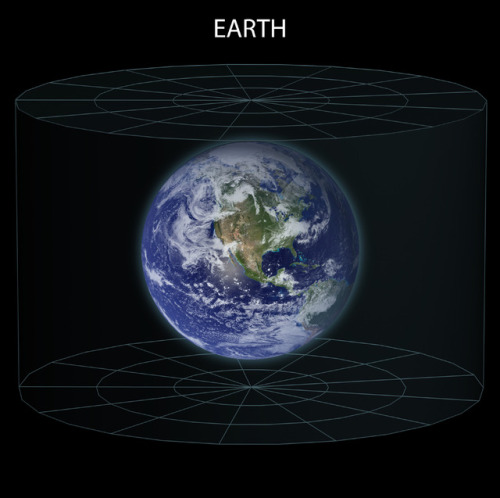
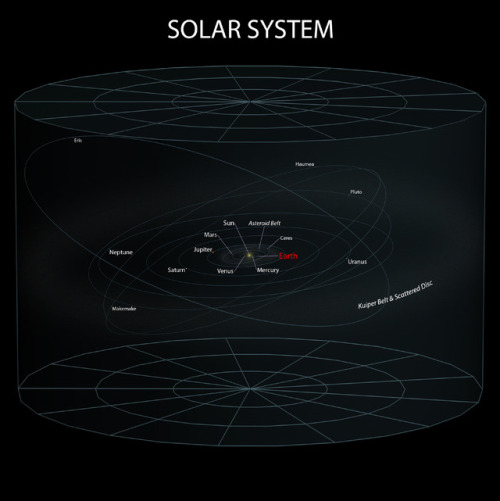
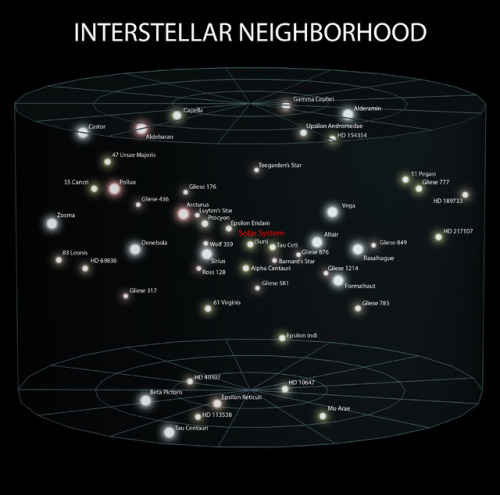
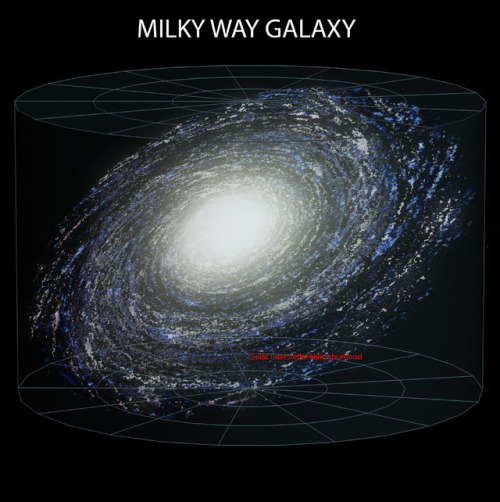
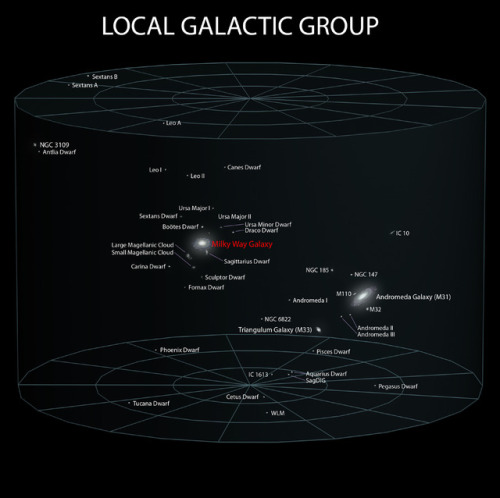
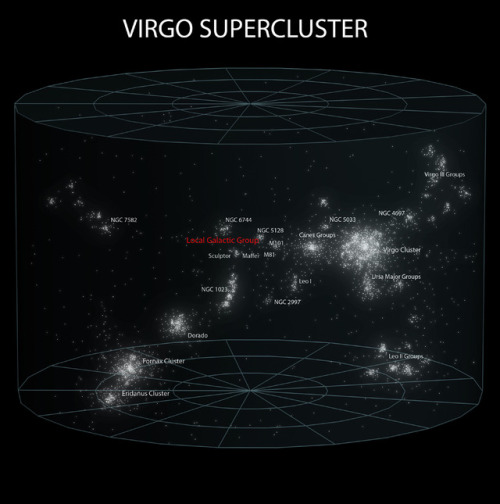
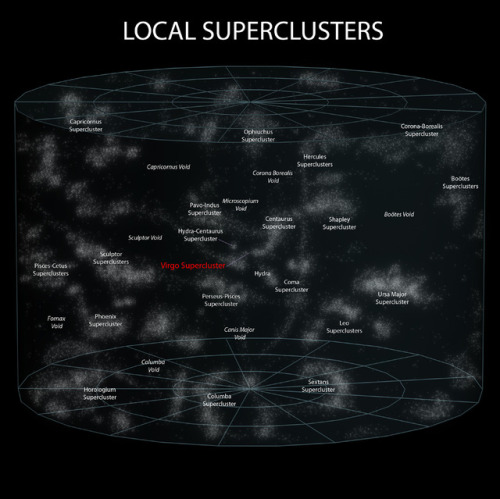
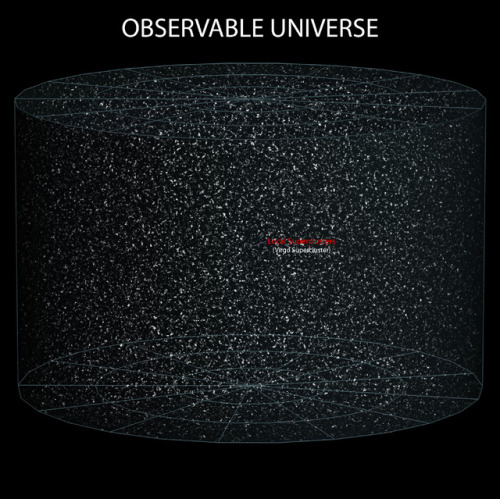
~ wikimedia commons
More Posts from Matthewjopdyke and Others
I am pleased to announce a NEW RELEASE to my Space Opera series. It is now available on Amazon in ebook and paperback formats!
Pathway to the Stars: Part 4, Universal Party
Autographed copies of printed material are available for direct purchase on the author website at:
https://www.ftb-pathway-publications.com
Thank you, Kim, for putting this together!
Largest Batch of Earth-size, Habitable Zone Planets
Our Spitzer Space Telescope has revealed the first known system of seven Earth-size planets around a single star. Three of these planets are firmly located in an area called the habitable zone, where liquid water is most likely to exist on a rocky planet.

This exoplanet system is called TRAPPIST-1, named for The Transiting Planets and Planetesimals Small Telescope (TRAPPIST) in Chile. In May 2016, researchers using TRAPPIST announced they had discovered three planets in the system.

Assisted by several ground-based telescopes, Spitzer confirmed the existence of two of these planets and discovered five additional ones, increasing the number of known planets in the system to seven.

This is the FIRST time three terrestrial planets have been found in the habitable zone of a star, and this is the FIRST time we have been able to measure both the masses and the radius for habitable zone Earth-sized planets.
All of these seven planets could have liquid water, key to life as we know it, under the right atmospheric conditions, but the chances are highest with the three in the habitable zone.

At about 40 light-years (235 trillion miles) from Earth, the system of planets is relatively close to us, in the constellation Aquarius. Because they are located outside of our solar system, these planets are scientifically known as exoplanets. To clarify, exoplanets are planets outside our solar system that orbit a sun-like star.

In this animation, you can see the planets orbiting the star, with the green area representing the famous habitable zone, defined as the range of distance to the star for which an Earth-like planet is the most likely to harbor abundant liquid water on its surface. Planets e, f and g fall in the habitable zone of the star.
Using Spitzer data, the team precisely measured the sizes of the seven planets and developed first estimates of the masses of six of them. The mass of the seventh and farthest exoplanet has not yet been estimated.

For comparison…if our sun was the size of a basketball, the TRAPPIST-1 star would be the size of a golf ball.
Based on their densities, all of the TRAPPIST-1 planets are likely to be rocky. Further observations will not only help determine whether they are rich in water, but also possibly reveal whether any could have liquid water on their surfaces.
The sun at the center of this system is classified as an ultra-cool dwarf and is so cool that liquid water could survive on planets orbiting very close to it, closer than is possible on planets in our solar system. All seven of the TRAPPIST-1 planetary orbits are closer to their host star than Mercury is to our sun.

The planets also are very close to each other. How close? Well, if a person was standing on one of the planet’s surface, they could gaze up and potentially see geological features or clouds of neighboring worlds, which would sometimes appear larger than the moon in Earth’s sky.

The planets may also be tidally-locked to their star, which means the same side of the planet is always facing the star, therefore each side is either perpetual day or night. This could mean they have weather patterns totally unlike those on Earth, such as strong wind blowing from the day side to the night side, and extreme temperature changes.

Because most TRAPPIST-1 planets are likely to be rocky, and they are very close to one another, scientists view the Galilean moons of Jupiter – lo, Europa, Callisto, Ganymede – as good comparisons in our solar system. All of these moons are also tidally locked to Jupiter. The TRAPPIST-1 star is only slightly wider than Jupiter, yet much warmer.
How Did the Spitzer Space Telescope Detect this System?
Spitzer, an infrared telescope that trails Earth as it orbits the sun, was well-suited for studying TRAPPIST-1 because the star glows brightest in infrared light, whose wavelengths are longer than the eye can see. Spitzer is uniquely positioned in its orbit to observe enough crossing (aka transits) of the planets in front of the host star to reveal the complex architecture of the system.

Every time a planet passes by, or transits, a star, it blocks out some light. Spitzer measured the dips in light and based on how big the dip, you can determine the size of the planet. The timing of the transits tells you how long it takes for the planet to orbit the star.

The TRAPPIST-1 system provides one of the best opportunities in the next decade to study the atmospheres around Earth-size planets. Spitzer, Hubble and Kepler will help astronomers plan for follow-up studies using our upcoming James Webb Space Telescope, launching in 2018. With much greater sensitivity, Webb will be able to detect the chemical fingerprints of water, methane, oxygen, ozone and other components of a planet’s atmosphere.
At 40 light-years away, humans won’t be visiting this system in person anytime soon…that said…this poster can help us imagine what it would be like:

Make sure to follow us on Tumblr for your regular dose of space: http://nasa.tumblr.com
SPACE: A Global Frontier
Space is a global frontier. That’s why we partner with nations all around the world to further the advancement of science and to push the boundaries of human exploration. With international collaboration, we have sent space telescopes to observe distant galaxies, established a sustainable, orbiting laboratory 254 miles above our planet’s surface and more! As we look forward to the next giant leaps in space exploration with our Artemis lunar exploration program, we will continue to go forth with international partnerships!
Teamwork makes the dream work. Here are a few of our notable collaborations:
Artemis Program

Our Artemis lunar exploration program will send the first woman and the next man to the Moon by 2024. Using innovative technologies and international partnerships, we will explore more of the lunar surface than ever before and establish sustainable missions by 2028.
During these missions, the Orion spacecraft will serve as the exploration vehicle that will carry the crew to space, provide emergency abort capability and provide safe re-entry from deep space return velocities. The European Service Module, provided by the European Space Agency, will serve as the spacecraft’s powerhouse and supply it with electricity, propulsion, thermal control, air and water in space.

The Gateway, a small spaceship that will orbit the Moon, will be a home base for astronauts to maintain frequent and sustainable crewed missions to the lunar surface. With the help of a coalition of nations, this new spaceship will be assembled in space and built within the next decade.
Gateway already has far-reaching international support, with 14 space agencies agreeing on its importance in expanding humanity’s presence on the Moon, Mars and deeper into the solar system.
International Space Station

The International Space Station (ISS) is one of the most ambitious international collaborations ever attempted. Launched in 1998 and involving the U.S., Russia, Canada, Japan and the participating countries of the European Space Agency — the ISS has been the epitome of global cooperation for the benefit of humankind. The largest space station ever constructed, the orbital laboratory continues to bring together international flight crews, globally distributed launches, operations, training, engineering and the world’s scientific research community.
Hubble Space Telescope

The Hubble Space Telescope, one of our greatest windows into worlds light-years away, was built with contributions from the European Space Agency (ESA).

ESA provided the original Faint Object Camera and solar panels, and continues to provide science operations support for the telescope.
Deep Space Network

The Deep Space Network (DSN) is an international array of giant radio antennas that span the world, with stations in the United States, Australia and Spain. The three facilities are equidistant approximately one-third of the way around the world from one another – to permit constant communication with spacecraft as our planet rotates. The network supports interplanetary spacecraft missions and a few that orbit Earth. It also provides radar and radio astronomy observations that improve our understanding of the solar system and the larger universe!
Mars Missions
Information gathered today by robots on Mars will help get humans to the Red Planet in the not-too-distant future. Many of our Martian rovers – both past, present and future – are the products of a coalition of science teams distributed around the globe. Here are a few notable ones:
Curiosity Mars Rover

France: ChemCam, the rover’s laser instrument that can analyze rocks from more than 20 feet away
Russia: DAN, which looks for subsurface water and water locked in minerals
Spain: REMS, the rover’s weather station
InSight Mars Lander

France with contributions from Switzerland: SEIS, the first seismometer on the surface of another planet
Germany: HP3, the heatflow probe that will help us understand the interior structure of Mars
Spain: APSS, the lander’s weather station
Mars 2020 Rover

Norway: RIMFAX, a ground-penetrating radar
France: SuperCam, the laser instrument for remote science
Spain: MEDA, the rover’s weather station
Space-Analog Astronaut Training
We partner with space agencies around the globe on space-analog missions. Analog missions are field tests in locations that have physical similarities to the extreme space environments. They take astronauts to space-like environments to prepare as international teams for near-term and future exploration to asteroids, Mars and the Moon.

The European Space Agency hosts the Cooperative Adventure for Valuing and Exercising human behavior and performance Skills (CAVES) mission. The two week training prepares multicultural teams of astronauts to work safely and effectively in an environment where safety is critical. The mission is designed to foster skills such as communication, problem solving, decision-making and team dynamics.

We host our own analog mission, underwater! The NASA Extreme Environment Mission Operations (NEEMO) project sends international teams of astronauts, engineers and scientists to live in the world’s only undersea research station, Aquarius, for up to three weeks. Here, “aquanauts” as we call them, simulate living on a spacecraft and test spacewalk techniques for future space missions in hostile environments.
International Astronautical Congress
So, whether we’re collaborating as a science team around the globe, or shoulder-to-shoulder on a spacewalk, we are committed to working together with international partners for the benefit of all humanity!
If you’re interested in learning more about how the global space industry works together, check out our coverage of the 70th International Astronautical Congress (IAC) happening this week in Washington, D.C. IAC is a yearly gathering in which all space players meet to talk about the advancements and progress in exploration.
Make sure to follow us on Tumblr for your regular dose of space: http://nasa.tumblr.com

Author – Matthew J. Opdyke Matthew J Opdyke is a published Science Fiction Author with a passion to take his audience on journey's into the cosmos and to inspire his audience to look at the world with a new vision of futurism and enhancing a state of mind toward progression.
The Universe's Brightest Lights Have Some Dark Origins
Did you know some of the brightest sources of light in the sky come from black holes in the centers of galaxies? It sounds a little contradictory, but it’s true! They may not look bright to our eyes, but satellites have spotted oodles of them across the universe.
One of those satellites is our Fermi Gamma-ray Space Telescope. Fermi has found thousands of these kinds of galaxies in the 10 years it’s been operating, and there are many more out there!

Black holes are regions of space that have so much gravity that nothing - not light, not particles, nada - can escape. Most galaxies have supermassive black holes at their centers - these are black holes that are hundreds of thousands to billions of times the mass of our sun - but active galactic nuclei (also called “AGN” for short, or just “active galaxies”) are surrounded by gas and dust that’s constantly falling into the black hole. As the gas and dust fall, they start to spin and form a disk. Because of the friction and other forces at work, the spinning disk starts to heat up.

The disk’s heat gets emitted as light - but not just wavelengths of it that we can see with our eyes. We see light from AGN across the entire electromagnetic spectrum, from the more familiar radio and optical waves through to the more exotic X-rays and gamma rays, which we need special telescopes to spot.

About one in 10 AGN beam out jets of energetic particles, which are traveling almost as fast as light. Scientists are studying these jets to try to understand how black holes - which pull everything in with their huge amounts of gravity - somehow provide the energy needed to propel the particles in these jets.

Many of the ways we tell one type of AGN from another depend on how they’re oriented from our point of view. With radio galaxies, for example, we see the jets from the side as they’re beaming vast amounts of energy into space. Then there’s blazars, which are a type of AGN that have a jet that is pointed almost directly at Earth, which makes the AGN particularly bright.

Our Fermi Gamma-ray Space Telescope has been searching the sky for gamma ray sources for 10 years. More than half (57%) of the sources it has found have been blazars. Gamma rays are useful because they can tell us a lot about how particles accelerate and how they interact with their environment.

So why do we care about AGN? We know that some AGN formed early in the history of the universe. With their enormous power, they almost certainly affected how the universe changed over time. By discovering how AGN work, we can understand better how the universe came to be the way it is now.

Fermi’s helped us learn a lot about the gamma-ray universe over the last 10 years. Learn more about Fermi and how we’re celebrating its accomplishments all year.
Make sure to follow us on Tumblr for your regular dose of space: http://nasa.tumblr.com.

Please enjoy my new sci- fi fantasy novel as our heroes prepare for a giant space adventure in this two book series. Currently available on Amazon! Further than Before: Pathway to the Stars ( 2 book series) amazon.com/author/matthewopdyke #scififantasy #spaceopera #sciencefiction #mustread #scifinovels #fantasynovels #sciencefictionnovels #biotechnology #nanotechnology #theoreticalphysics #physics #darkmatter #utopian #strongfemalelead https://www.instagram.com/p/Bo1bqokgeJT/?utm_source=ig_tumblr_share&igshid=98bv21jpi1jt
Proud to Announce...
Proud to Announce…

Here is a portion of an email I received today. After three years of research, breathing life into new characters, and helping the world enjoy their journey, I found I had to divide my novel into two parts. So, there will be a Part 1 and a Part 2. Without further ado:
“Congratulations! Your book “Further Than Before: Pathway to the Stars” is available for pre-order in the Kindle Store. It is…
View On WordPress

All three versions (chill, rock, orchestra) ***** Further than Before: Pathway to the Stars, Part 1 -- Audible ***** “Nature and humanity can be amazing, but likewise, it can be brutal. Brutality, as far too many know it, is unnecessary if we consider and implement one thing, innovation with purpose—a good purpose is brutality’s ideal replacement, and it comes minus unnecessary misery. It’s starting to become clear to me now what it is that we can do and how we can do it.” - Eliza Williams to Yesha Alevtina (Further than Before: Pathway to the Stars, Part 1) ***** #books #sciencefictionbooks #SpaceOpera #scifi #ftbpathwaypublications #grahambessellieu #matthewjopdyke #politicalsciencefiction https://www.instagram.com/p/BxGgatnAtas/?igshid=1r6xgyjrd88m6

#matthewopdyke #scifiauthor #politicalsciencefiction #longevity #neuroscience #physics #theoreticalphysics #biotechnology #nanotechnology #physiology #solarsystem #pathwaytothestars #advancedcivilization https://www.instagram.com/p/BtA69fdgfy1/?utm_source=ig_tumblr_share&igshid=1jswi9krjwmqe
Happy International Women’s Day!

Today we celebrate International Women’s Day, a day in which we honor and recognize the contributions of women…both on Earth and in space.

Since the beginning, women have been essential to the progression and success of America’s space program.

Throughout history, women have had to overcome struggles in the workplace. The victories for gender rights were not achieved easily or quickly, and our work is not done.

Today, we strive to make sure that our legacy of inclusion and excellence lives on.

We have a long-standing cultural commitment to excellence that is largely driven by data, including data about our people. And our data shows progress is driven by questioning our assumptions and cultural prejudices – by embracing and nurturing all talent we have available, regardless of gender, race or other protected status, to build a workforce as diverse as our mission. This is how we, as a nation, will take the next giant leap in exploration.

As a world leader in science, aeronautics, space exploration and technology, we have a diverse mission that demands talent from every corner of America, and every walk of life.

So, join us today, and every day, as we continue our legacy of inclusion and excellence.

Happy International Women’s Day!
Learn more about the inspiring woman at NASA here: https://women.nasa.gov/
-
 incondicionalista liked this · 3 weeks ago
incondicionalista liked this · 3 weeks ago -
 turbobike1952 liked this · 1 month ago
turbobike1952 liked this · 1 month ago -
 thereturnofjim reblogged this · 1 month ago
thereturnofjim reblogged this · 1 month ago -
 thereturnofjim liked this · 1 month ago
thereturnofjim liked this · 1 month ago -
 uniquesherin reblogged this · 1 month ago
uniquesherin reblogged this · 1 month ago -
 foreverborgeeed liked this · 1 month ago
foreverborgeeed liked this · 1 month ago -
 camarajordan liked this · 1 month ago
camarajordan liked this · 1 month ago -
 sc-guy77 liked this · 1 month ago
sc-guy77 liked this · 1 month ago -
 dopeitsjay reblogged this · 1 month ago
dopeitsjay reblogged this · 1 month ago -
 dopeitsjay liked this · 1 month ago
dopeitsjay liked this · 1 month ago -
 dirtymike0044 liked this · 1 month ago
dirtymike0044 liked this · 1 month ago -
 somethingcleverv reblogged this · 1 month ago
somethingcleverv reblogged this · 1 month ago -
 somethingcleverv liked this · 1 month ago
somethingcleverv liked this · 1 month ago -
 chinawalls liked this · 1 month ago
chinawalls liked this · 1 month ago -
 neonorange1111 reblogged this · 1 month ago
neonorange1111 reblogged this · 1 month ago -
 111ym reblogged this · 1 month ago
111ym reblogged this · 1 month ago -
 getfreshapparel liked this · 1 month ago
getfreshapparel liked this · 1 month ago -
 sirlonius reblogged this · 1 month ago
sirlonius reblogged this · 1 month ago -
 sirlonius liked this · 1 month ago
sirlonius liked this · 1 month ago -
 slumsaintt reblogged this · 1 month ago
slumsaintt reblogged this · 1 month ago -
 yournightjar reblogged this · 1 month ago
yournightjar reblogged this · 1 month ago -
 yournightjar liked this · 1 month ago
yournightjar liked this · 1 month ago -
 stewystewy reblogged this · 1 month ago
stewystewy reblogged this · 1 month ago -
 etceterodactyl reblogged this · 1 month ago
etceterodactyl reblogged this · 1 month ago -
 migelfan liked this · 1 month ago
migelfan liked this · 1 month ago -
 graspingbirdtail liked this · 1 month ago
graspingbirdtail liked this · 1 month ago -
 ssslqb0001 liked this · 1 month ago
ssslqb0001 liked this · 1 month ago -
 blerbzilla reblogged this · 1 month ago
blerbzilla reblogged this · 1 month ago -
 blerbzilla liked this · 1 month ago
blerbzilla liked this · 1 month ago -
 sulimo1979 reblogged this · 1 month ago
sulimo1979 reblogged this · 1 month ago -
 sulimo1979 liked this · 1 month ago
sulimo1979 liked this · 1 month ago -
 hokchotagain liked this · 1 month ago
hokchotagain liked this · 1 month ago -
 titanicbuff2017 liked this · 1 month ago
titanicbuff2017 liked this · 1 month ago -
 mildly-hallucinogenic-toreador liked this · 1 month ago
mildly-hallucinogenic-toreador liked this · 1 month ago -
 alfredpaul reblogged this · 2 months ago
alfredpaul reblogged this · 2 months ago -
 tiktaali liked this · 2 months ago
tiktaali liked this · 2 months ago -
 sonyteac liked this · 2 months ago
sonyteac liked this · 2 months ago -
 itspikachugirl liked this · 2 months ago
itspikachugirl liked this · 2 months ago -
 scienceandpopcorn reblogged this · 2 months ago
scienceandpopcorn reblogged this · 2 months ago -
 bishopsbox liked this · 2 months ago
bishopsbox liked this · 2 months ago -
 q3conceptlab liked this · 2 months ago
q3conceptlab liked this · 2 months ago -
 cwmayo liked this · 2 months ago
cwmayo liked this · 2 months ago -
 neuronship liked this · 2 months ago
neuronship liked this · 2 months ago -
 jupiterpluvius4 liked this · 2 months ago
jupiterpluvius4 liked this · 2 months ago
